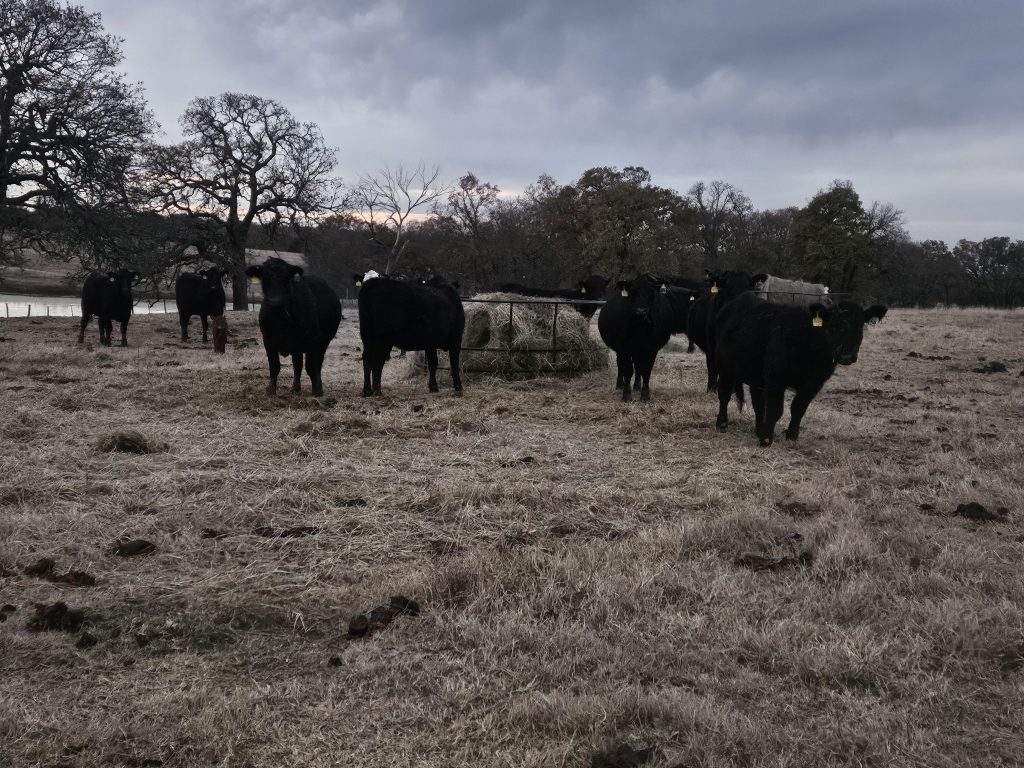
Brian Pugh, Oklahoma State University NE Area Agronomy Specialist, offers herd health advice as part of the weekly series known as the “Cow Calf Corner,” published electronically by Dr. Derrell Peel, Mark Johnson, and Paul Beck. Today, Pugh talks about the value of using hay rings.
Hay feeding losses occur primarily from trampling, refusal, and leaf shatter. Some feeding loss is inevitable but can vary from as little as 2% to more than 50%. A study conducted by Arkansas Cooperative Extension Service found that feeding round bales in open bottom hay rings reduced the amount of hay fed by 29% when compared to feeding round bales unprotected (13% loss vs. 42% loss). If a 1200-pound round bale cost $35, a 29% reduction in hay loss is equivalent to a $10.15 savings per bale. The hay savings from using a ring on 20 bales would pay for a round bale feeder that cost $200.
Feeding losses from 20 round bales fed without a hay ring would pay for a commercially available round bale feeder.

A more recent study by OSU assessed the efficacy of four types of hay ring feeders. Reported dry matter losses for the different rings were: poly rings (21%), open-bottom steel rings (20.5%), sheeted rings (12.6%) and modified cone feeders (5.3%). This data indicates that switching from an open bottom ring to a modified cone feeder would result in a 15.2% reduction in dry matter loss. With the same $35 per bale hay, that equates to a savings of $5.32 per bale. Cone feeders range in style and costs, but a popular model retails for $565. This indicates that after feeding 107 bales through the cone feeder it would pay for itself in hay savings.
If we compare the OSU modified cone data to the University of Arkansas data from using no ring feeder, we could potentially realize a 36.7% reduction in dry matter loss by utilizing a feeder. This is a savings of $12.85 per bale at $35/bale hay value! This decision to purchase a proven and efficient hay feeder design would only require 44 bales of fed hay to pay for the purchase. Round bale feeders are a wise investment when free-choice hay feeding is necessary.



















